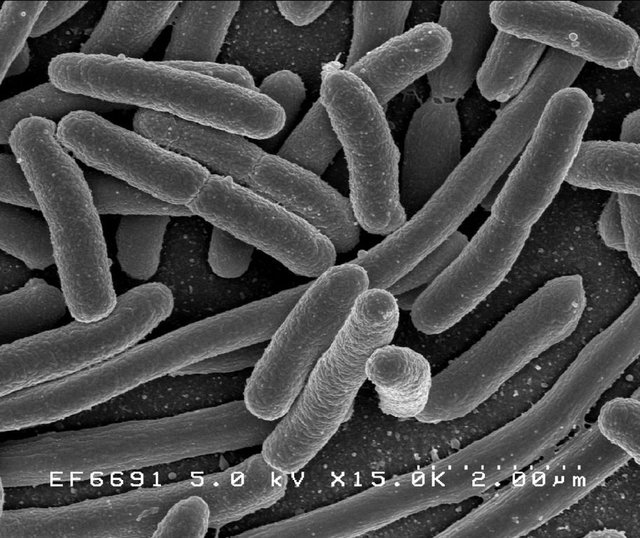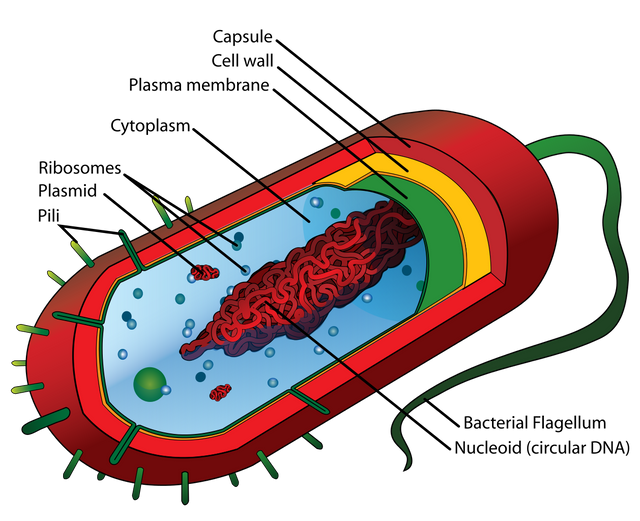Can We Use Bacteria to Clean Up Radioactive Waste?
 Rocky Mountain Laboratories, NIAID, NIHWikipedia
Rocky Mountain Laboratories, NIAID, NIHWikipedia
Geobacter sulferreducens and some other bacterial species naturally reduce metals in their immediate environment, If the bacteria are in the presence of dissolved uranium, such as in groundwater, the bacteria donate electrons to the metal, changing the reactivity and reducing the solubility of the dissolved uranium. This reduction can halt the further spread of contamination.
 Energy.govWikipedia
Energy.govWikipedia
It was thought that filaments, called pili, facilitated this reductive microbial process, but these tiny hair-like structures only form under certain conditions. Researchers recently were able to induce Geobacter to form pili by subjecting them to stressful conditions, such as reduced temperatures, and were thereby able to study the structures in depth. They found that the pili allowed the bacteria to reduce a much larger amount of uranium, due to greater surface area available for electron transfer as well as protecting the bacteria from radioactive harm. Bacteria without pili must reduce uranium inside the cellular envelope, exposing the cell to damage and inhibiting its reductive activities. The pili however, keep the uranium at a safer distance from the cell.
 Mariana Ruiz Villarreal.Wikipedia
Mariana Ruiz Villarreal.Wikipedia
An article published in Nature Nanotechnology makes the claim that these pili are a type of electrically-conducting nanowire. The pili transfer free electrons produced from bacterial metabolic processes to acceptor ions outside of the cell, such as iron or uranium. This step is essential to bacterial survival, but can also be utilized for a variety of bioremediation applications, including clean-up efforts at cold war-era uranium processing facilities. In theory, this process could be applied to radioactive isotopes of other elements such as cobalt and plutonium. Other pili-forming bacteria, including thermophilic methanogens and photosynthetic cyanobacteria may also function in this manner. Researchers are now looking at ways to mimic these same reduction processes with non-living nanowires based on the bacterial pili. Such devices may allow for more fine-tuned control and selectivity by adding different chemical functional groups to the nanowires. The scientists hope the devices would be able to function in nuclear reactors where bacteria couldn’t survive, providing a low cost, environmentally friendly solution to an ever-present danger.
Sources:
Lee Sweetlove, Nature. doi:10.1038/news.2011.519 https://www.nature.com/news/2011/110905/full/news.2011.519.html
Derek Lovely, Nature Nanotechnology. doi:10.1038/nnano.2014.236
Amazing. So the Bacteria can resist the radioactive enviroment and after that ¿an exchange of particles? Damn!
Why do you not promote your scientific posts on steemstem or utopian?
If you would like to know something about them write to me on discord or on steem chat: I am @moncia90.
Congratulations!
THATS SO IMPRESSIVE!!
Hi there. I'm new in Steemit ! I followed you, let's increase the power of Steemit together! I hope you follow me. I'm always glad to have a new community with good people! ;)